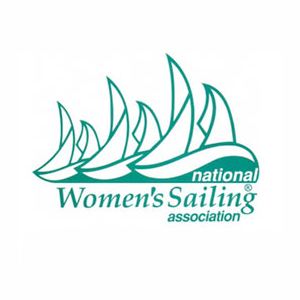We wish WSF / NWSA director Marie Rogers and her crew on Good Trouble a safe and speedy crossing for the TransPac. On June 29 the crew of Good Trouble, an Alan Andrews-designed 56-foot sailboat, will hear the starting gun for this year’s Transpac 2,200-mile romp to Hawaii.
Skipper Marie Rogers, who is black, is believed to be the only female skipper in the 60-boat fleet. It’s a distinction giving her pride for the role modeling opportunity. Yet she laments of the lack of diversity in the West Coast’s premiere biennial yacht race.
Roger’s role as a strong advocate for opening the yachting world to people underrepresented in the sport attracted the attention of a financial benefactor. The benefactor proposed to create a foundation to introduce more women and people of color to the highest echelon of yacht racing. A Southern California and Transpac racing veteran himself, he had seen firsthand the lack of diversity in offshore racing events. He was saddened, Rogers recalled, and wanted to bring change.
Together they created Offshore Racing Outreach (ORO), a nonprofit organization and purchased the Andrews 56 yacht, which had been lying largely unused in the Bay Area. They renamed it Good Trouble, adopting the slogan deceased black Congressman John Lewis used when pushing for civil rights and social change.
Rogers said, “We wanted something fast, competitive and manageable for sailors entering an offshore career. We found a few but they were out of reach price-wise. We went to Alan Andrews, and he said he knew of a boat owned by a couple in Richmond who had done Pac Cups, Mexico Races and who’d cruised it.”
After acquiring the boat, a refit began at a Berkeley facility before sailing south to San Pedro and Cabrillo Way Marina to complete the outfitting for the race.
The purpose of ORO is unique. “This program is designed to introduce a more diverse group of individuals to the world of yacht racing,” according to its website. “We have developed learning pathways that focus on key skills necessary for safe passage making, including racing fundamentals, systems repair and maintenance, offshore safety, weather, and navigation. We will introduce and offer training to future recreational boaters and maritime professionals.”
The organization’s mission statement adds that the intent is “to establish a program for the recruitment, education, and training of sailors in the sport of big boat offshore sailboat racing. Recruits of all backgrounds will be eligible: however, an emphasis will be placed on those of lower income, traditionally excluded (i.e., by race, gender, or religion) and underprivileged status. Offshore Racing Outreach is committed to providing an inclusive and welcoming environment for all members of our board, staff, volunteers, and clients.”
Rogers notes what Offshore Racing Outreach is doing is groundbreaking. While a few people of color and women are sailing during weeknight racing in Marina del Rey and in Southern California, “for women and people of color to get on offshore boats is harder, even if you have an owner who is open to it,” said Rogers.
Boats in the race are divided into divisions according to the Offshore Racing Rule speed performance handicap. Good Trouble is in a division of five boats and starts on June 29. Of the nine people aboard, four have Coast Guard captain’s licenses, and all but two have additional offshore safety certificates.
Good Trouble has a crew of nine for the Transpac, five women and seven people of color, including Marie. “Plus two white guys,” Rogers added. Co-coach and navigator, Paul Martsen, and Greg Carter, sailing professionals, are passionate about the program and asked to be involved. Martsen, runs the J/World operation in Puerto Vallarta. Wayne Zittel, founder of J/World Performance Sailing School, with locations in San Francisco, San Diego and Puerto Vallarta, Mexico, serves as a mentor and advisor. A decade ago Zittel and Rogers collaborated to organize a women’s sailing program.
The race starts off Point Fermin, CA and ends in Honolulu, HI. It is typically predictable with a starboard beat past Catalina Island. About three days on a beat, until the tradewinds are reached, when the sheets are eased for the downwind run to the Aloha State. Follow the TransPac and look for Good Trouble updates on Facebook.



